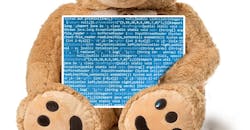The latest spate of ransomware highlights the need for security testing. One technique for doing this is called fuzz testing, or fuzzing. It is an automated test methodology that uses large amounts of invalid or random data for the input to the application. The application is tested in the usual fashion for errors such as memory leaks and invalid pointers. This approach works best with applications that have structured inputs, such as packets for a protocol or file formats.
Automatically generating test vectors is not a new approach, and has been used in other test environments—including unit testing. The trick is to generate examples that are semi-valid so as to expose corner cases, parsing errors, and errors in general. It can also be used to test security to see if trust boundaries are breached.
There are toolchains available to generate the test cases. Some provide automated input minimization support that is designed to reduce the number of test cases and help isolate a failure. This is useful because a malformed, totally random input may cause a difficult-to-identify bug. A minimization tool will minimize the input stream to the point where the error still occurs, making the task of identifying the problem easier. Delta debugging is an approach that can reduce a test case to a minimal failure-inducing case.
Fuzzing can also be used to detect differential bugs, or bugs detected by comparing results using the same inputs with different application implementations. This might be an incrementally improved application or two different applications that perform the same function, such as an encryption algorithm or a communication protocol stack. Different results using the same input indicate a case that should be investigated.
Google’s OSS-Fuzz program found more than 1,000 bugs in 47 open-source projects. Of course, this type of testing is not limited to open-source projects, but these do provide easy access to large amounts of code. Top errors included heap buffer overflows, global buffer overflows, and stack overflows. Many of these were caught as part of regression testing of new versions.
Fuzzing is only one part of a testing regimen, but it may not be one that you are already using. While it’s not applicable to all applications, it can be quite useful and automated for many applications.
About the Author
William G. Wong
Senior Content Director - Electronic Design and Microwaves & RF
I am Editor of Electronic Design focusing on embedded, software, and systems. As Senior Content Director, I also manage Microwaves & RF and I work with a great team of editors to provide engineers, programmers, developers and technical managers with interesting and useful articles and videos on a regular basis. Check out our free newsletters to see the latest content.
You can send press releases for new products for possible coverage on the website. I am also interested in receiving contributed articles for publishing on our website. Use our template and send to me along with a signed release form.
Check out my blog, AltEmbedded on Electronic Design, as well as his latest articles on this site that are listed below.
You can visit my social media via these links:
- AltEmbedded on Electronic Design
- Bill Wong on Facebook
- @AltEmbedded on Twitter
- Bill Wong on LinkedIn
I earned a Bachelor of Electrical Engineering at the Georgia Institute of Technology and a Masters in Computer Science from Rutgers University. I still do a bit of programming using everything from C and C++ to Rust and Ada/SPARK. I do a bit of PHP programming for Drupal websites. I have posted a few Drupal modules.
I still get a hand on software and electronic hardware. Some of this can be found on our Kit Close-Up video series. You can also see me on many of our TechXchange Talk videos. I am interested in a range of projects from robotics to artificial intelligence.


